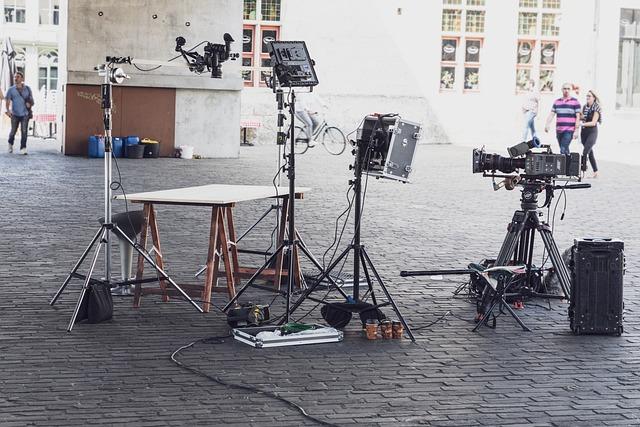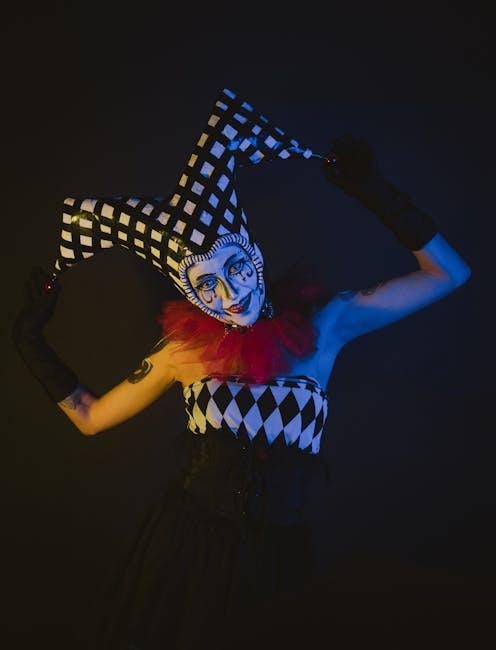In the realm of modern cinema, few films have captured the unsettling essence of societal unrest as powerfully as “Joker.” At the heart of its haunting narrative lies an equally compelling visual language, meticulously crafted by cinematographer Lawrence Sher. This article delves into the artistry behind the camera, exploring how Sher’s innovative techniques and deliberate choices in lighting, framing, and color palette set the film’s gritty tone. By dissecting these elements, we reveal how “Joker” transcends traditional storytelling, immersing audiences in a visceral experience that challenges perceptions and evokes profound emotional responses. Join us as we uncover the intricate dance between vision and narrative that defines this cinematic masterpiece.
Crafting the Visual Aesthetic: Analyzing the Cinematographers Palette
In Todd Phillips’ Joker, the cinematographer’s palette is a masterful blend of muted tones and stark contrasts, effectively capturing the film’s unsettling atmosphere. The use of color is both deliberate and evocative, with a reliance on desaturated hues that mirror Arthur Fleck’s descent into madness. Lawrence Sher, the film’s cinematographer, employs a palette that ranges from grimy yellows to oppressive greys, reflecting Gotham’s decaying society and Arthur’s internal chaos.
Key elements of the visual aesthetic include:
- Shadow and Light: Strategic lighting choices emphasize the duality of Arthur’s character, casting deep shadows that obscure and reveal his shifting persona.
- Color Symbolism: The pervasive use of green and yellow hues symbolizes decay and sickness, while occasional bursts of red signal moments of intense emotion or violence.
- Camera Movement: Fluid, often handheld camera movements create an intimate connection with Arthur’s world, enhancing the film’s gritty realism.
By meticulously crafting each frame, Sher allows the audience to feel the oppressive weight of Arthur’s world, immersing them in a visual narrative that is as compelling as it is disturbing.

Lighting Choices and Their Impact on the Films Atmosphere
- Natural Light vs. Artificial Light: In “Joker,” the interplay between natural and artificial lighting plays a crucial role in shaping the film’s gritty atmosphere. Natural light is often used to evoke a sense of realism, grounding the audience in Arthur Fleck’s grim reality. Scenes bathed in natural light are juxtaposed with those drenched in harsh, artificial lighting, highlighting the stark contrast between Arthur’s internal world and the oppressive urban landscape.
- Color Temperature and Mood: The film’s lighting choices lean heavily on warm, muted tones that evoke a sense of decay and desperation. The use of cooler tones in pivotal scenes, such as those set in the asylum or during moments of heightened tension, adds layers of unease. This careful manipulation of color temperature contributes to the overall mood, accentuating the psychological descent of the protagonist.

Camera Techniques: Creating Intimacy and Unease
In Joker, cinematographer Lawrence Sher employs a variety of camera techniques to evoke both intimacy and unease, creating a visceral experience for the audience. Close-ups play a pivotal role, allowing viewers to delve into Arthur Fleck’s psychological transformation. By capturing subtle facial expressions and the nuances of Joaquin Phoenix’s performance, the audience is drawn intimately into Arthur’s world, fostering a connection that feels both personal and unsettling.
Dynamic camera movements further amplify the film’s gritty tone. Techniques such as handheld shots and slow zooms are used to mirror Arthur’s descent into madness, creating a sense of instability and tension. These movements are often juxtaposed with static frames, emphasizing moments of eerie calm that precede chaos. The deliberate use of shadow and light enhances this duality, with dim lighting casting long, ominous shadows that heighten the sense of foreboding. Together, these elements craft a visual narrative that is both haunting and immersive.

Recommendations for Aspiring Cinematographers: Lessons from Joker
For those looking to craft a visually compelling narrative, Joker offers a treasure trove of insights. One of the film’s standout techniques is its use of lighting to reflect the protagonist’s inner turmoil. Aspiring cinematographers should consider the following:
- Natural Lighting: Embrace natural light to enhance authenticity. The dim, muted tones in Joker contribute to its raw and gritty atmosphere, mirroring the character’s descent into madness.
- Camera Movement: Utilize dynamic camera work to mirror emotional intensity. The film’s fluid transitions and tracking shots allow viewers to experience Arthur’s chaotic world firsthand.
- Color Palette: Experiment with color to evoke emotion. The strategic use of green and yellow hues in key scenes accentuates the unsettling mood, guiding the audience through the psychological landscape.
By studying these elements, aspiring cinematographers can learn how to use visual storytelling to enhance narrative depth and audience engagement.

